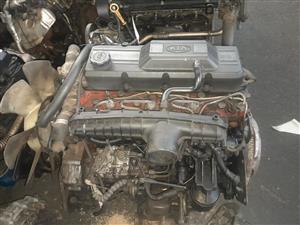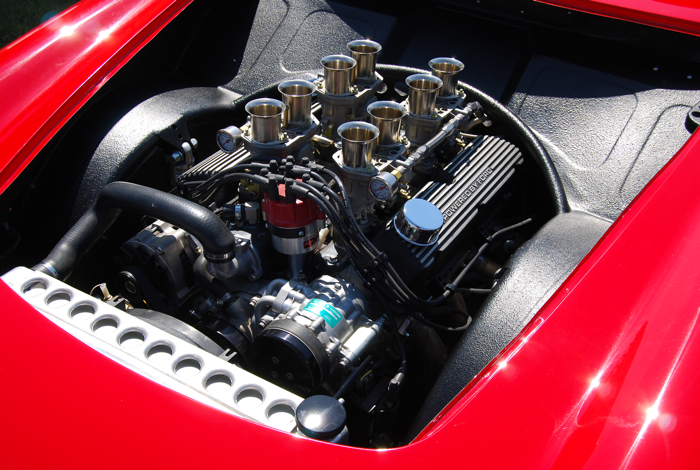Update Your Lorry with a New Opel Corsa Engine
Update Your Lorry with a New Opel Corsa Engine
Blog Article
Discovering the Inner Workings of a Compact Lorry's Engine System
As drivers, we often consider granted the detailed processes that occur within the boundaries of our car's engine system. The portable yet complicated machinery that thrusts us ahead is a marvel of design precision and control. From the controlled surges in the burning chamber to the meticulous timing of gas injection, every component plays an important role in the smooth procedure of the engine. In this exploration of a portable car's engine system, we will certainly decipher the internal functions of this mechanical harmony, dropping light on the enigmas that drive us ahead on our day-to-day trips.
Burning Refine Overview
The burning process in a small automobile's engine system is a critical system that successfully transforms fuel into power to power the lorry. This process happens within the burning chamber of the engine, where gas and air mix, stir up, and generate regulated surges. The combustion procedure contains 4 main stages: intake, compression, exhaust, and power.
Throughout the consumption stage, the piston moves downward, attracting in a mixture of air and fuel right into the burning chamber. This descending movement produces the power required to drive the lorry. This cyclic burning process is essential to the operation of a small lorry's engine system, ensuring efficient energy conversion for propulsion.
Piston and Cylinder Communication

The piston's specific fit within the cyndrical tube is essential for maintaining optimal compression and avoiding energy loss during combustion. Limited clearances in between the piston and cyndrical tube wall surfaces make sure reliable securing, enabling the piston to move smoothly without allowing gases to leak past. Correct lubrication is additionally essential to decrease friction and wear in between these parts, improving durability and performance.
Additionally, the design and products made use of in producing the piston and cylinder impact engine efficiency and resilience. Modern engines frequently employ light-weight yet long lasting materials like aluminum alloys for pistons and cyndrical tube liners to decrease inertia and boost thermal performance. Generally, the harmonious communication in between the piston and cyndrical tube is fundamental to the engine's functionality and total performance.
Fuel Injection System Functionality
Gas injection systems in portable car engines play a critical duty in exactly delivering gas to the combustion chamber for reliable and controlled ignition. The fuel shot system functions by infusing fuel right into the combustion chamber at the ideal moment throughout the engine's procedure (opel corsa engine). This exact timing ensures that the gas mixes uniformly with the air for proper burning, leading to enhanced gas effectiveness and reduced discharges
There are largely two kinds of fuel shot systems made use of in compact lorry engines: port fuel injection (PFI) and straight fuel injection why not find out more (DFI) PFI systems infuse fuel into the consumption port before the intake shutoff, while DFI systems inject fuel straight into the burning chamber. Both systems have their advantages, with DFI using far better fuel atomization and PFI supplying an extra affordable option.
Recognizing Engine Cooling Systems
Efficient operation of a compact automobile's engine counts greatly on the effectiveness of its cooling systems. Engine air conditioning is vital to avoid getting too hot, which can bring about major damage and reduced efficiency. The air conditioning system in a portable vehicle normally contains several components collaborating to manage the engine temperature. One vital component is the radiator, which makes use of coolant to take in heat from the engine. As the warm coolant streams via the radiator, it launches warmth right into the air, cooling down before returning to the engine. The water pump distributes the coolant with the engine and radiator, making sure a regular circulation to manage temperature level. In addition, the thermostat aids regulate the coolant circulation to keep ideal engine temperature level. Some automobiles likewise have cooling down fans that trigger when additional cooling is needed, such as during hefty website traffic or heat. Understanding these engine cooling mechanisms is vital for maintaining the performance and longevity of a portable lorry's engine system.

Exhaust System Parts Explained
The optimum functioning of a portable car's engine air conditioning mechanisms depends on a corresponding system recognized as the exhaust system, which makes up different essential elements for ensuring reliable discharges and engine efficiency. The exhaust manifold collects exhaust gases from the engine's paths and cylinders them to the catalytic converter.
One critical component of the exhaust system is the oxygen sensing unit, which monitors the oxygen levels in the exhaust gases to aid regulate gas intake and ensure ideal engine efficiency. opel corsa engine. In addition, the resonator may be present in some exhaust systems to lower noise levels. Generally, the exhaust system plays an essential duty in maintaining engine effectiveness, lowering unsafe discharges, and making certain a quieter driving experience for compact automobile proprietors

Conclusion
Finally, the compact car's engine system is a complicated mix of elements that function with each other to promote the burning process, convert fuel into energy, and eliminate waste gases. Comprehending the inner functions of the engine system, consisting of the piston and cyndrical tube interaction, gas shot system, engine cooling mechanisms, and exhaust system components, is important for keeping optimum performance and efficiency of the automobile.
The reference burning procedure in a compact car's engine system is an important device that effectively transforms gas right into power to power the vehicle.Fuel injection systems in small automobile engines play an essential duty in specifically supplying gas to the combustion chamber for controlled and efficient ignition.There are primarily two kinds of gas shot systems utilized in compact car engines: port fuel shot (PFI) and straight gas injection (DFI) Understanding these engine cooling devices is essential for keeping the performance and longevity of a compact automobile's engine system.
The optimum performance of a portable vehicle's engine air conditioning mechanisms depends on a corresponding system known as the exhaust system, which makes up different necessary parts linked here for guaranteeing reliable discharges and engine efficiency.
Report this page